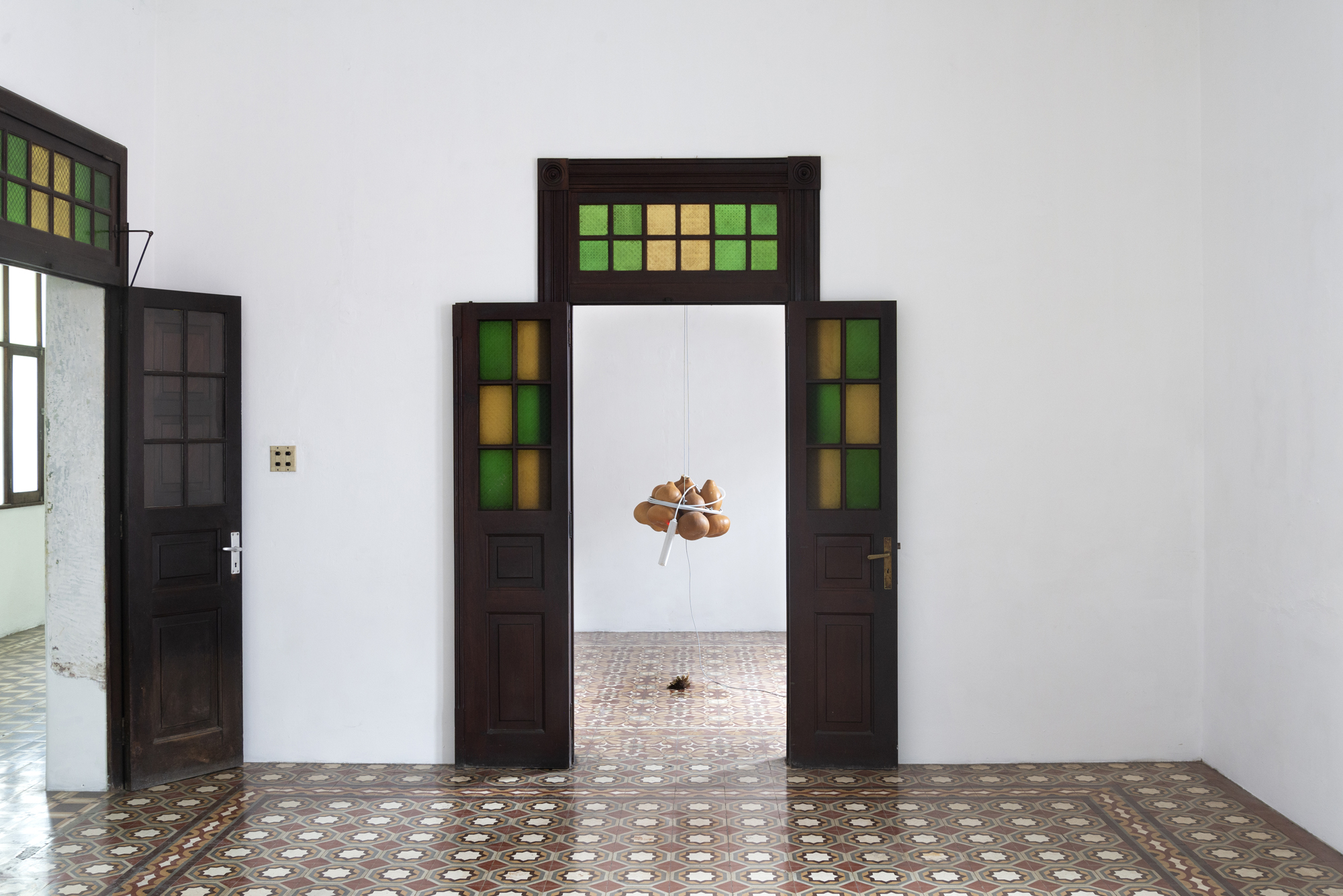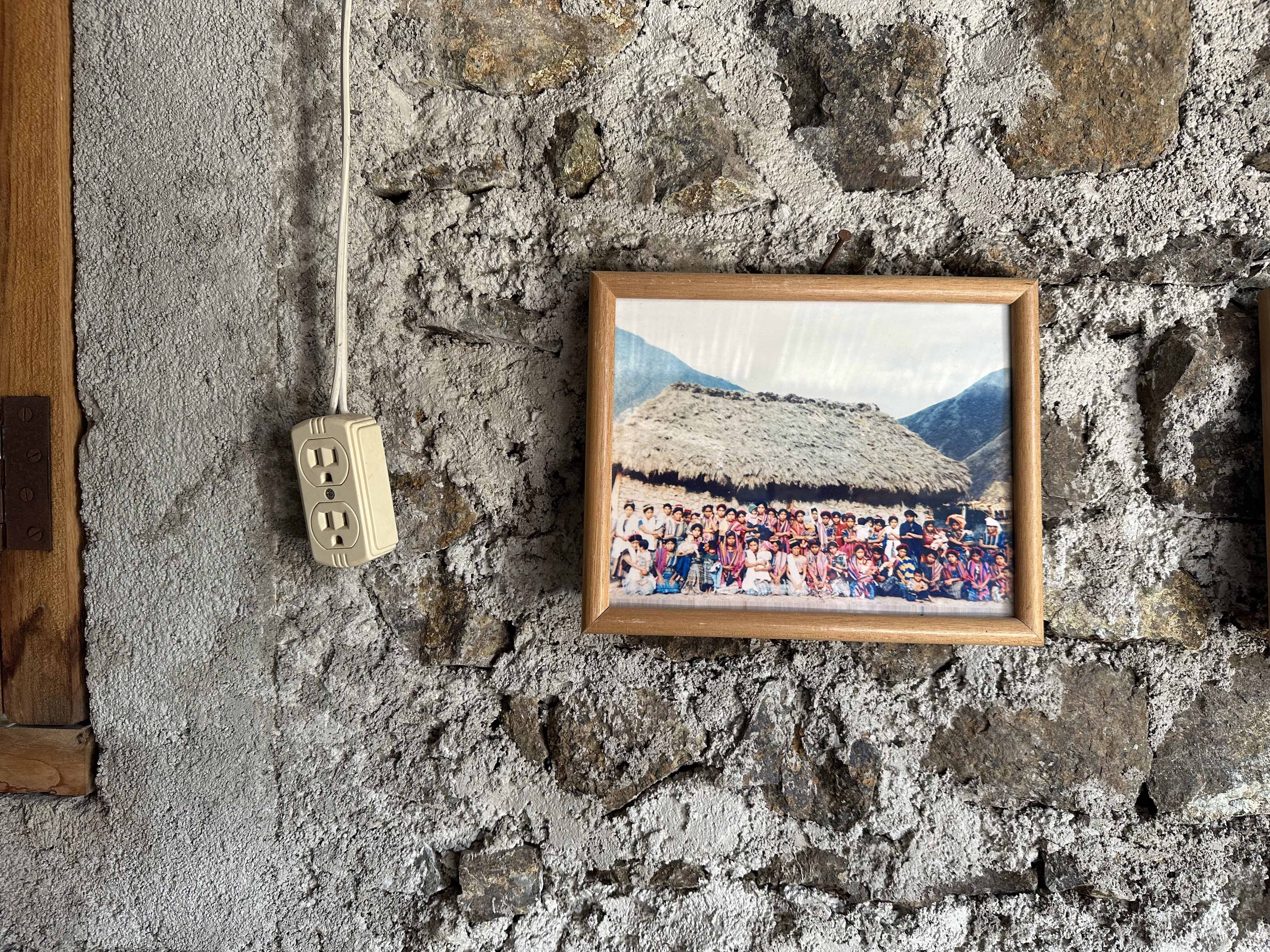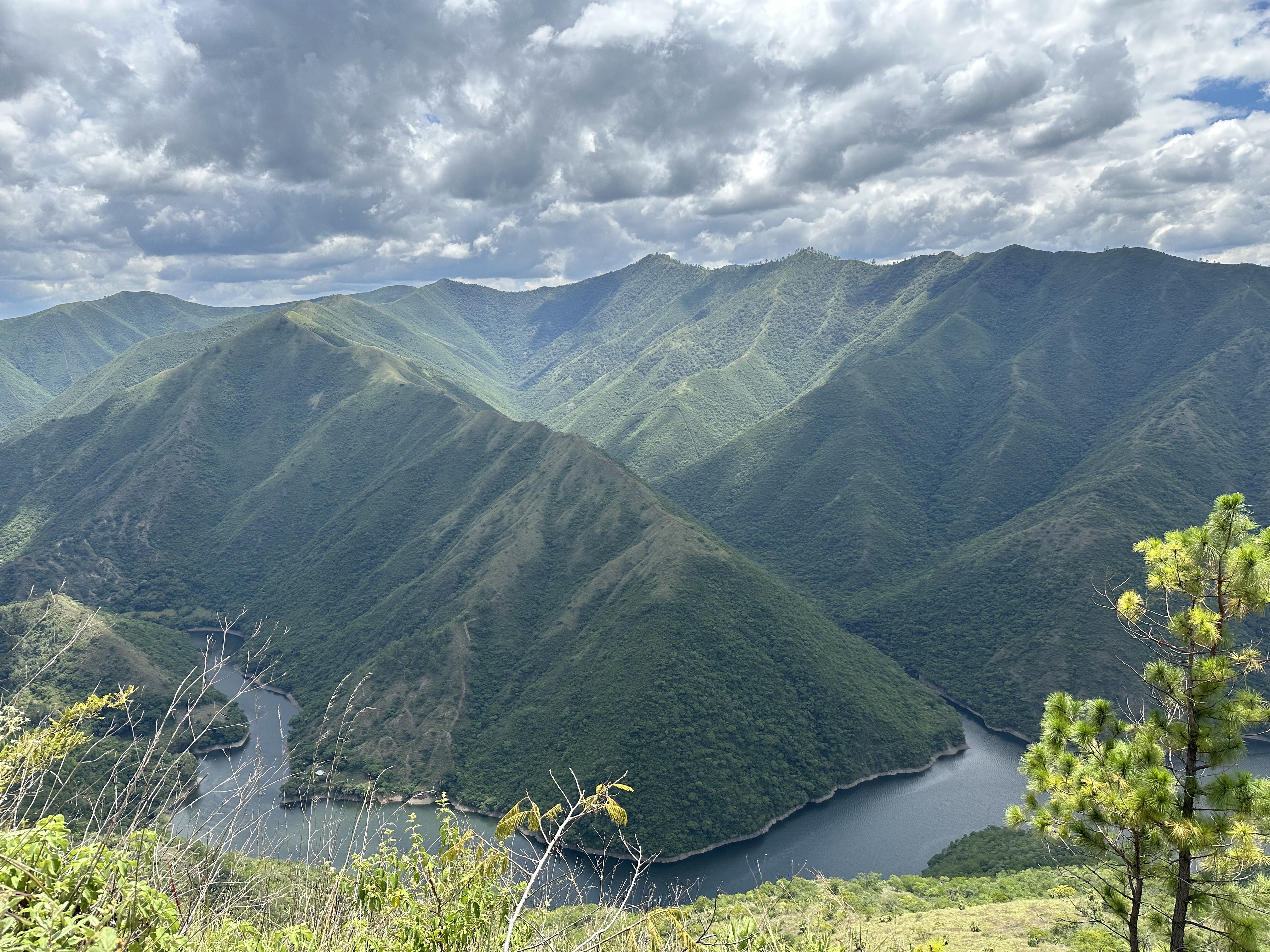Aq’
2023
Aq’ translates to ‘tongue’, but the same word was used to refer to ‘electricity’ by the Achí speaking elder Mascini met when visiting the few surviving and displaced families living in the town called Río Negro, adjacent to the artificially maintained basin that leads to the hydro electric dam at Chixoy.
The single biggest source of electricity in Guatemala originates precisely from this dam - an environment haunted by the trauma of the largely exterminated communities of Q'eqchi peoples that once lived in villages which are now at the bottom of the Río Negro. The flooding of their homes, schools and community centers went hand in hand with a series of massacres instigated by the army of the same government involved with the construction of the electric infrastructure in the 1980’s.
Promises made to compensate the peoples of Río Negro were never kept, and the few surviving families that nowadays live in the area are still dependant on the approval of the armed guards at the dam in order to use the only available road to enter or leave their premises. In short, the artificial landscape that leads to the country's main electric lifeline is built on the past and present violence against the people who inhabit that same landscape.
Traditionally used by the local communities as containers for drinking water, as well as floating devices, a series of ‘tecomates’ was used as part of an installation installed at Proyectos Utravioleta. The water held by the tecomates (collected from Río Negro) was released throughout the duration of the exhibition Alchemy of Aches, through the eyes of an electric power socket, as if weeping.
2023
Aq’ translates to ‘tongue’, but the same word was used to refer to ‘electricity’ by the Achí speaking elder Mascini met when visiting the few surviving and displaced families living in the town called Río Negro, adjacent to the artificially maintained basin that leads to the hydro electric dam at Chixoy.
The single biggest source of electricity in Guatemala originates precisely from this dam - an environment haunted by the trauma of the largely exterminated communities of Q'eqchi peoples that once lived in villages which are now at the bottom of the Río Negro. The flooding of their homes, schools and community centers went hand in hand with a series of massacres instigated by the army of the same government involved with the construction of the electric infrastructure in the 1980’s.
Promises made to compensate the peoples of Río Negro were never kept, and the few surviving families that nowadays live in the area are still dependant on the approval of the armed guards at the dam in order to use the only available road to enter or leave their premises. In short, the artificial landscape that leads to the country's main electric lifeline is built on the past and present violence against the people who inhabit that same landscape.
Traditionally used by the local communities as containers for drinking water, as well as floating devices, a series of ‘tecomates’ was used as part of an installation installed at Proyectos Utravioleta. The water held by the tecomates (collected from Río Negro) was released throughout the duration of the exhibition Alchemy of Aches, through the eyes of an electric power socket, as if weeping.
6 tecomates, water collected from the Rio Negro, tube, hydrolic pump, altered electric socket.
With admiration and gratitude for the deep strength and gracefulness of the peoples of Río Negro, who welcomed me in their community. Special thanks to Enrique Morales Larraondo and Proyectos Ultravioleta, who co-produced this project.
With admiration and gratitude for the deep strength and gracefulness of the peoples of Río Negro, who welcomed me in their community. Special thanks to Enrique Morales Larraondo and Proyectos Ultravioleta, who co-produced this project.




